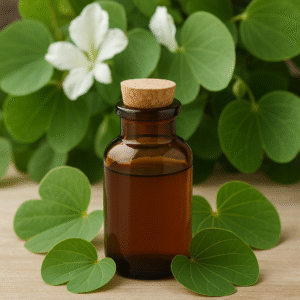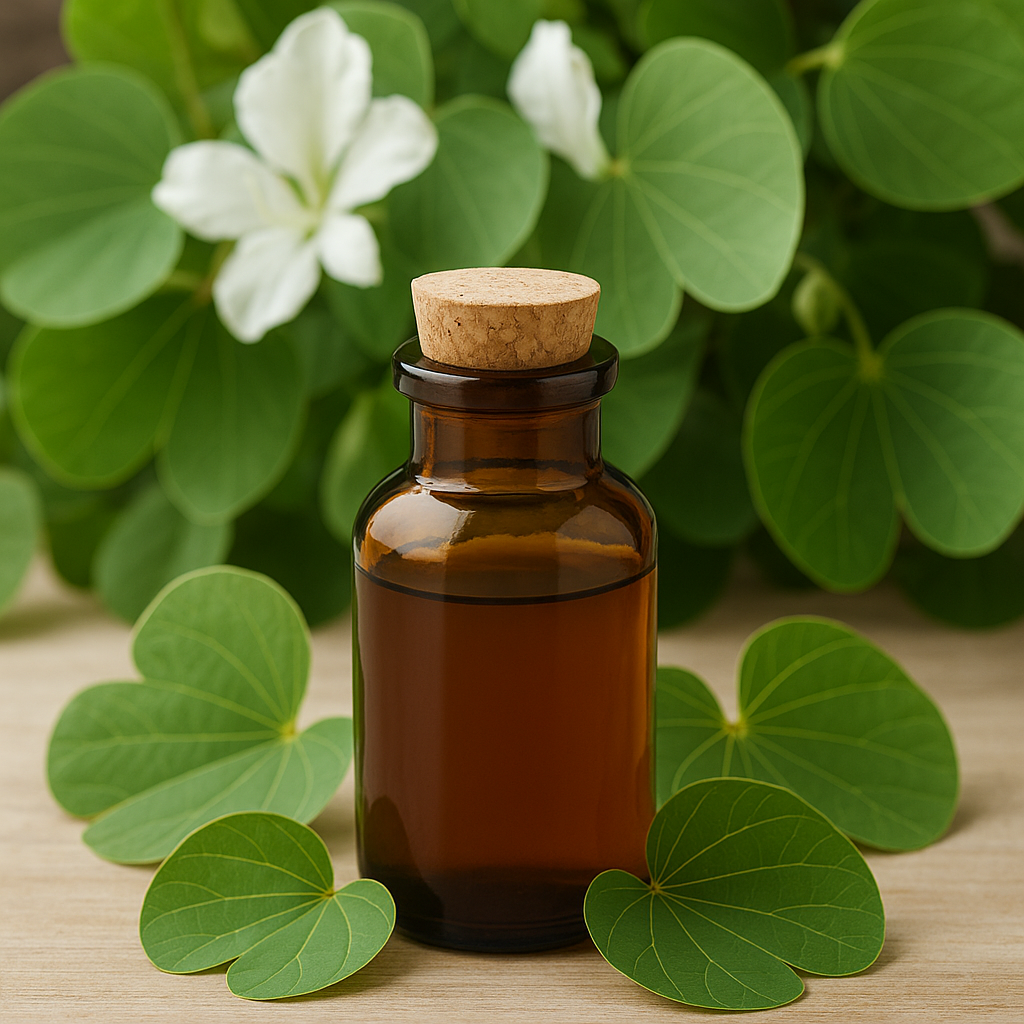When it comes to medicinal plants, Brazil is home to some of the most potent and versatile species. Among them, the Brazilian orchid tree, scientifically known as Bauhinia forficata, stands out for its impressive therapeutic benefits. Traditionally used for blood sugar regulation, detoxification, and immune support, this tree has earned its place in both folk medicine and scientific studies.
In this article, you’ll learn what the Brazilian orchid tree is, how it’s used, and 5 reasons to consider including it in your daily routine.
What Is the Brazilian Orchid Tree?
The Brazilian orchid tree is a medium-sized tree native to South America, especially Brazil, Argentina, and Paraguay. It belongs to the Fabaceae family and is well known for its distinctive bilobed leaves, which resemble a split hoof. The tree also produces elegant white or purple flowers that look similar to orchids — hence its popular name.
The most commonly used part of the plant is its leaves, which contain a variety of bioactive compounds, including flavonoids and phenolic acids. These leaves are often prepared as herbal tea, but can also be found in capsules, tinctures, and liquid extracts.
1. Supports Healthy Blood Sugar Levels
One of the most widely recognized benefits of Bauhinia forficata is its ability to help regulate blood glucose levels. Several studies suggest that compounds in the leaves may act similarly to insulin, enhancing glucose uptake and improving insulin sensitivity.
As a result, this plant is commonly used in natural diabetes management — especially in cases of type 2 diabetes. While it should never replace conventional treatment, it may serve as a supportive therapy when used under professional guidance.
🩺 Important: Always consult a healthcare provider before using any plant-based treatment for diabetes. Herbal support should be monitored to prevent interactions or side effects such as hypoglycemia.
2. Rich in Antioxidants for Cellular Protection
The Brazilian orchid tree contains a high concentration of antioxidants, including flavonoids, tannins, and phenolic compounds. These substances combat free radicals in the body — molecules that contribute to cellular damage, aging, and chronic disease.
Regular use of this plant may offer:
-
Stronger immune function
-
Reduced oxidative stress
-
Protection against inflammation
-
Delayed signs of aging
-
Improved cardiovascular health
Incorporating antioxidant-rich herbs like this one into your wellness plan is a natural way to enhance long-term vitality.
3. Natural Diuretic for Detox and Fluid Balance
Another notable benefit of Bauhinia forficata is its gentle diuretic effect. Diuretics help the body eliminate excess fluids and toxins through increased urination. This process is essential for:
-
Reducing bloating and water retention
-
Supporting kidney function
-
Flushing out waste and toxins
-
Promoting urinary tract health
For those seeking natural detox support or managing mild cases of high blood pressure and swelling, the Brazilian orchid tree offers a safe and effective option.
4. Promotes Liver Health
Your liver plays a central role in detoxification and metabolism. The leaves of Bauhinia forficata contain compounds that may protect liver cells and help regulate enzyme levels linked to inflammation or damage.
Used traditionally to support liver health, this plant may be beneficial for individuals with:
-
Fatty liver
-
Liver inflammation
-
Post-medication detox
-
Excess alcohol consumption
As part of a natural liver detox protocol, this plant may help restore balance and enhance liver performance over time.
5. Accessible, Affordable, and Traditionally Trusted
Unlike rare or imported medicinal herbs, the Brazilian orchid tree is widely available and budget-friendly. It can be found in:
-
Herbal shops
-
Online stores
-
Capsule or tea form
-
Liquid extracts or tinctures
Its long history of use in traditional South American medicine — especially in Brazilian folk remedies — adds credibility to its value.
How to Prepare the Tea
The most common way to consume it is through a simple tea:
Add 1 tablespoon of dried leaves to 1 liter of boiling water.
Let it steep for 10–15 minutes.
Drink 2–3 cups daily, preferably between meals.
Ready-made extracts and capsules are also excellent options for people who prefer convenience and standardized dosages.
Precautions and Safety
While the Brazilian orchid tree is natural, that doesn’t mean it’s risk-free. Always use responsibly and under guidance — especially if you have health conditions or take prescription medications.
Avoid or use with caution if you:
-
Are pregnant or breastfeeding
-
Have low blood pressure or hypoglycemia
-
Take diabetic or diuretic medication
Overconsumption can lead to dizziness, fatigue, or dangerous drops in blood sugar or blood pressure. Always start with low doses and gradually observe your body’s response.
Final Thoughts
The Brazilian orchid tree (Bauhinia forficata) is a powerful yet underrated medicinal plant with a wide range of health benefits. From glucose support and liver protection to antioxidant action and natural detoxification, it offers a holistic approach to wellness using a resource deeply rooted in South American tradition.
Whether you prepare it as a tea or use concentrated extracts, the key is to be consistent, informed, and always supervised by a health professional when needed. By incorporating this plant into your daily life, you may discover a deeper connection with nature and a more balanced path to health.

🌸 Add a Touch of Elegance to Your Wellness Ritual
Experience the soothing aroma of orchids with the P&J Trading Orchid Scented Oil. Perfect for candle making, soap crafting, diffusers, and self-care moments, this 100ml premium fragrance oil blends beautifully with natural routines. Bring the elegance of floral notes into your home today.

🌿 Embrace the Essence of the Cerrado
Bring the exotic flavor and cultural richness of pequi into your kitchen and heart. Whether stirred into traditional dishes, infused in oil, or used as a unique culinary ingredient, pequi is more than a fruit—it’s a symbol of Brazilian heritage and biodiversity.

